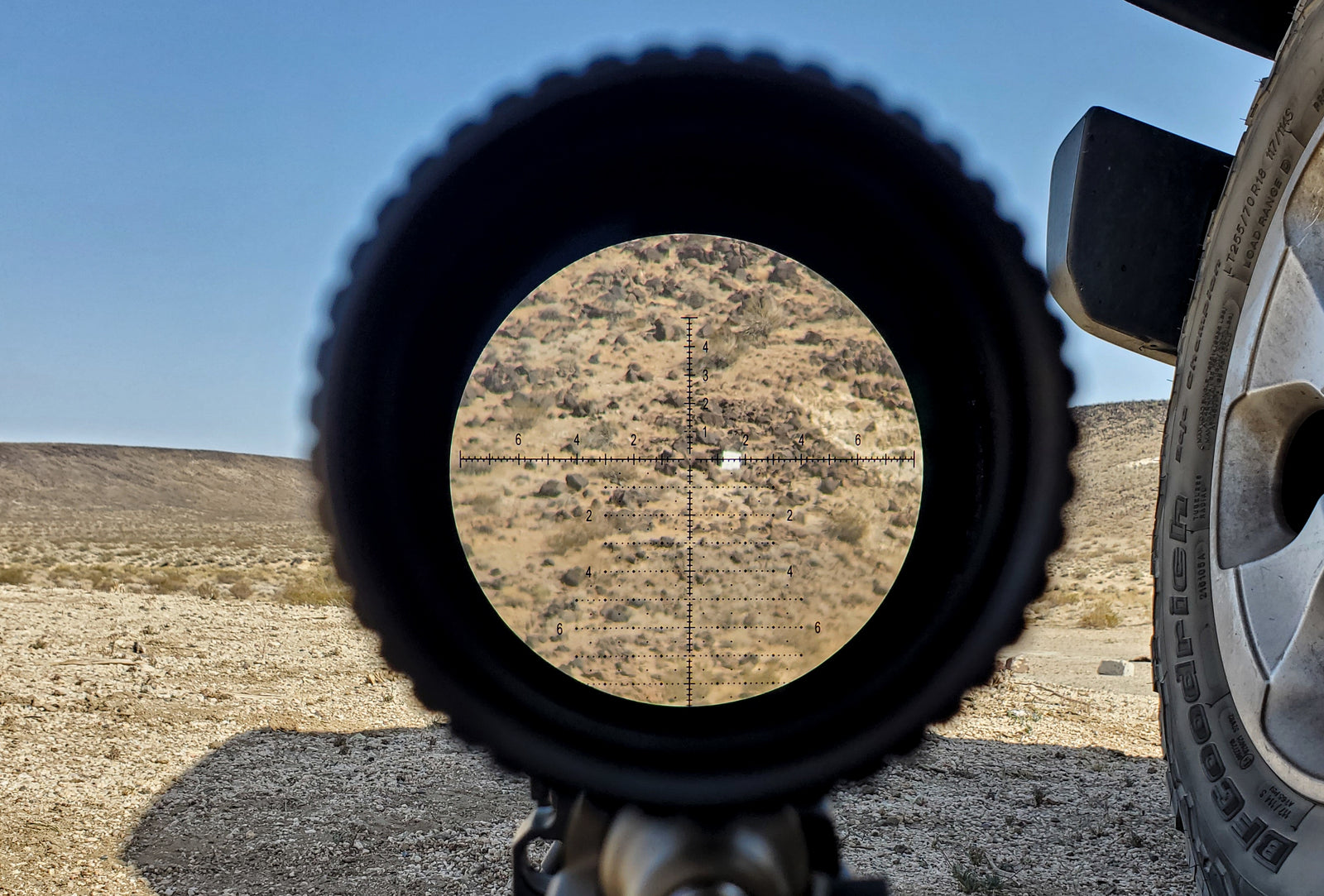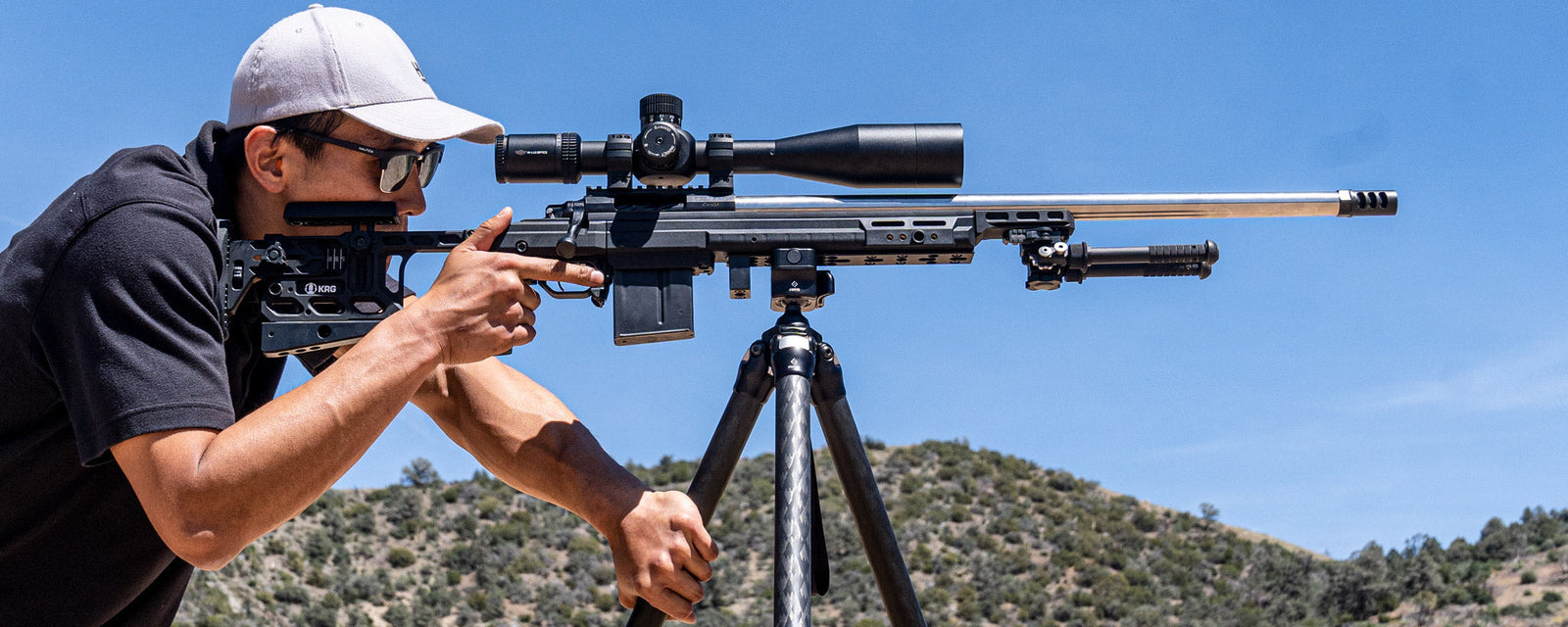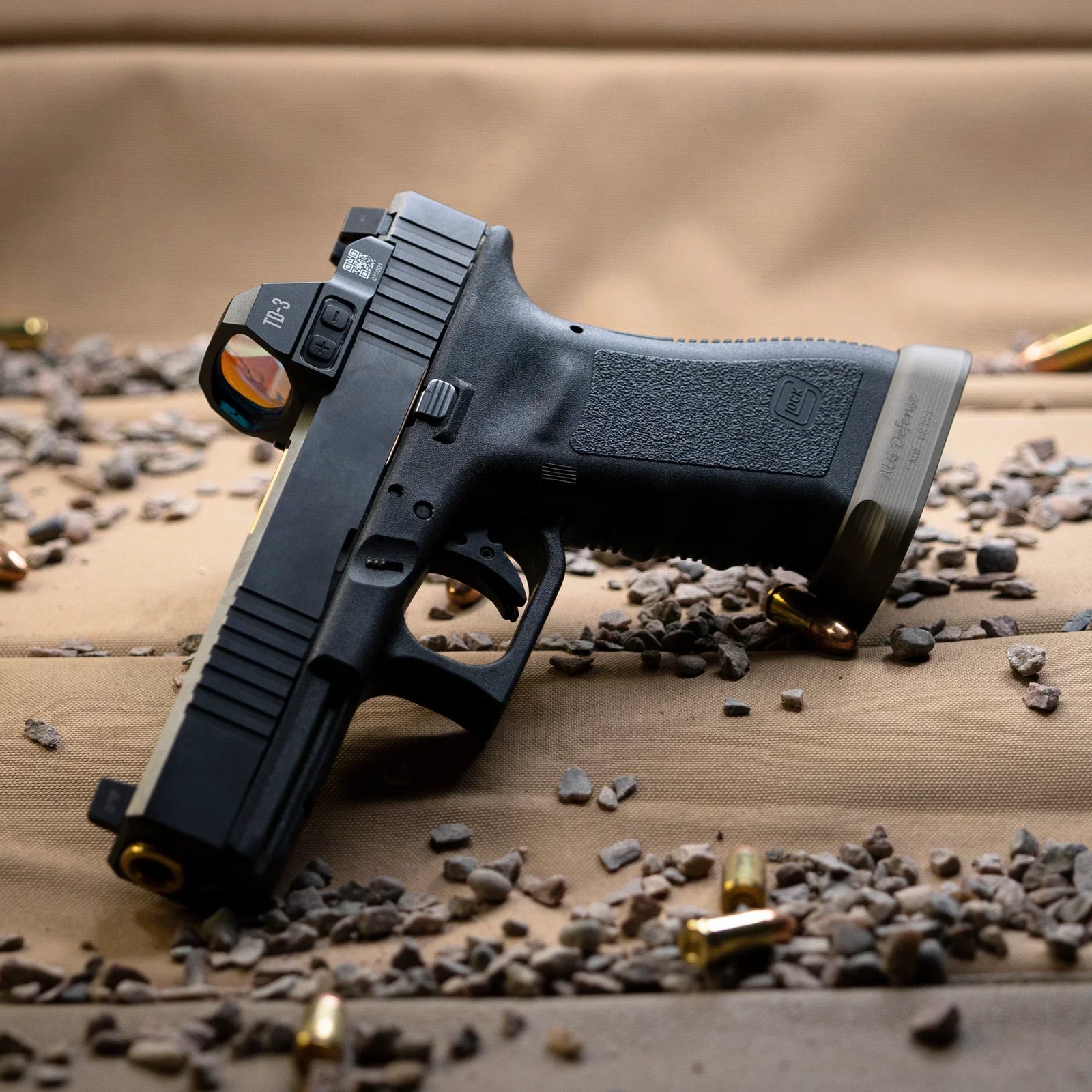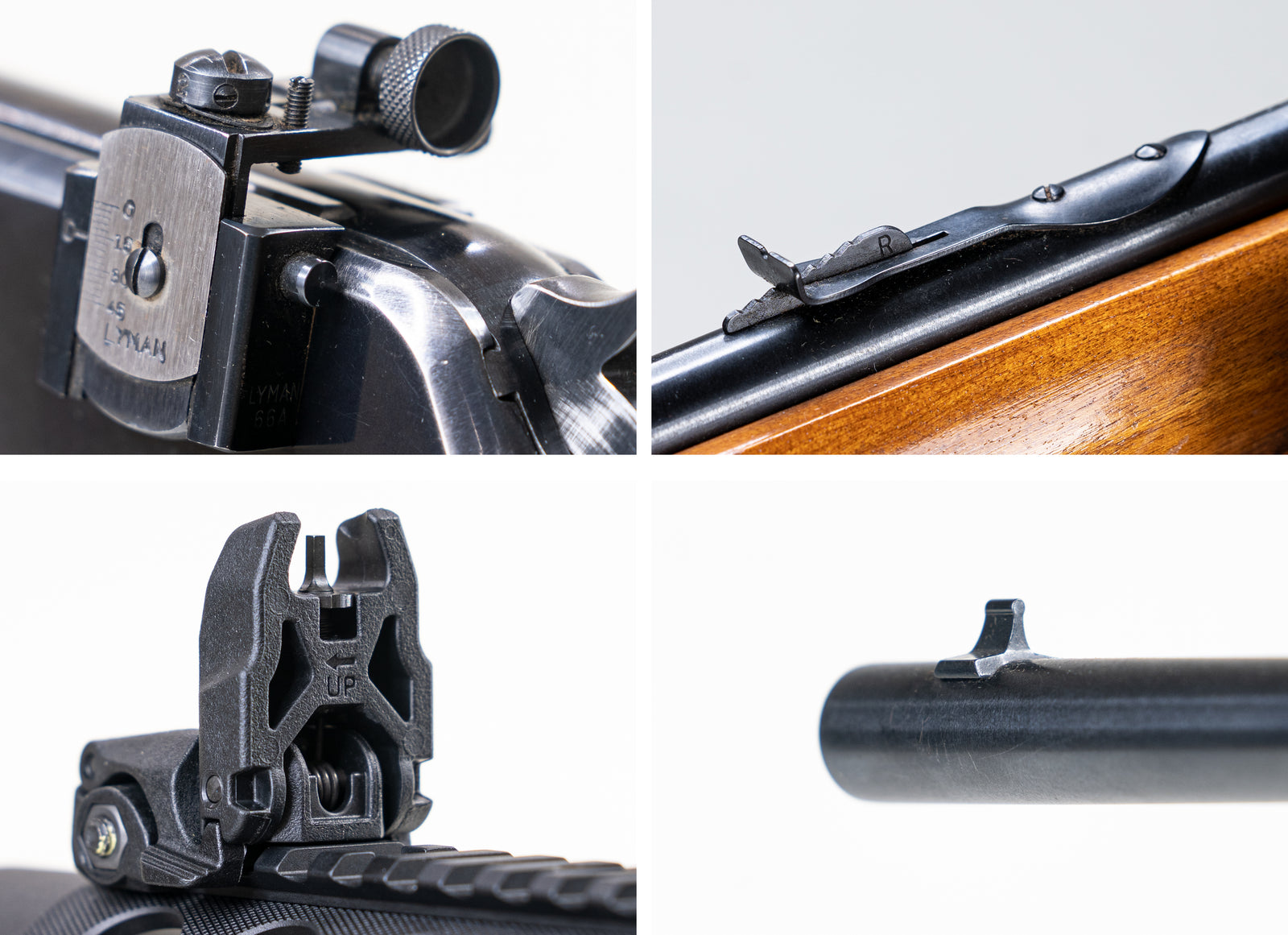Once you have your rifle in hand, you’ll need to know where to point it. Your sights are there to help you aim. Over the course of history, many types of sights have been made to fulfill different specific tasks. Today, they fall largely into three categories: iron sights, red dots, and scopes.
Iron Sights
Iron sights are the simplest sights. They do not have glass or electronics, and are typically made of metal. Iron sights are the kind of sights the rifle’s manufacturer will typically install from the factory, if any. While incredibly useful and often quite easy to use, iron sights have a disadvantage at distance: there is no magnification to help you see your target. Iron sights will usually be limited to only a few hundred yards of usability, largely depending on the capabilities of your eyesight.
Red Dots
Red dots are among the most futuristic-looking sights. A small LED light shines a precise dot on the inside of a specially-coated curved mirror, bouncing the dot back toward your eye. The entire setup requires at least one piece of glass, a small light, and a battery, so the red dot is quite compact. Unlike Hollywood-style laser sights with their easily-seen beams of light, only you will be able to see the dot. They also do not provide any magnification, giving the same distance-related limitations as iron sights. However, red dots solve many of the alignment issues that iron sights face.
Scopes
Scopes are the most useful type of sight for long-range shooting. Scopes are long tubes full of glass, providing magnification. They are the most mechanically complex of sights, and have the most breakable parts. As long as you attach your scope to the rifle properly and do not use it as a hammer, a well-made scope should be considered a long term investment. There are many factors to consider in choosing the right scope for the task at hand, and other articles on this site will go into much greater detail on those factors.
The Use

Aiming with iron sights can be quite intuitive.
Regardless of the sight you’re using, the goal is to get that sight zeroed. When you zero a sight, you are adjusting it to look directly at where your bullet is impacting. In a perfect world, you should be able to point your sight directly at the center of the bullseye and then place a bullet in the same spot. However, bullets travel on a downward arc and are pushed to the side by wind. You will have to re-zero for each different distance you intend to shoot at, or when the wind changes.
If you do not want to re-zero the scope for a new distance or a change in wind, you can instead aim intentionally away from the bullseye. If you know, for example, that your bullet will be striking two inches lower than the center of your sight, you can hold your aim two inches higher than the bullseye. Aiming intentionally off-center is known as a holdover - you’re holding the sight over somewhere other than the bullseye. This will result in a hit on center, even though your sight is not zeroed on the target. Holdovers are commonly used to account for wind, as the wind will be constantly shifting. Using a holdover is quicker than adjusting your sights to a new zero, but requires more active thinking on your part.

Holding off to the side at 1000 yards to counteract light winds. The target is the small white square to the right of the center.





Leave a comment (all fields required)